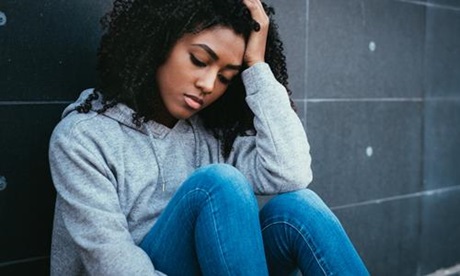Since the COVID-19 crisis, there have been increasing concerns about the deterioration of mental health among teenagers and young adults.
From surveys to reports, the statistics on young people’s mental health seem to depict a generation in distress—sad, anxious and discouraged.
Professor Ludovic Gicquel, head of the child and adolescent psychiatry department at Laborit Hospital in Poitiers, western France, sees this daily.
“We’re dealing with serious adolescents who have lost their carefree spirit.”
What’s causing this?
Some psychiatrists blamed the harmful effects of screens and social media, while others pointed to the harshness of the times—wars, climate change, and distressing news stories.
All agree that the situation worsened starting in 2020, around the time of COVID-19, although the pandemic alone doesn’t explain the scale of the problem.
“The mistake we made was blaming COVID too much. The health crisis is behind us, but the numbers haven’t gone down,” said Gicquel. He believes that the anxiety of this generation reflects that of society as a whole.
“We, as adults and health professionals, are also struggling. How could the youngest not be affected?”
A growing interest in psychology
“It’s not that young people are more worried than before—everyone is,” added Doctor Xavier Pommereau, a psychiatrist for adolescents and young adults in Talence, Nouvelle-Aquitaine in southwest France.
“But young people are still developing. They’re more sensitive and vulnerable.”
Is it fair to talk about a psychiatric epidemic? Perhaps not.
“Some key indicators can’t be ignored, especially the increase in suicide attempts,” said David Gourion, a psychiatrist in Paris and author.
“But just as some parents tend to downplay severe psychological distress in their children, others dramatize what may just be a passing phase.
Ask a teen how they are, and they often say they’re doing badly. Adolescence is inherently a time when one can feel tortured and may even express it.”
Child psychiatrist Dr. Stéphane Clerget also noted an increase in consultations. “Personally, I don’t see this as an aggravation of distress but as a growing interest in psychology and psychiatry.
Today’s young people know there’s someone to listen to them, and they seek that help more often,” the doctor said.
The “obvious” challenges in psychiatry
Parents often feel helpless in aiding their children, whether it’s minor or major distress. Many also feel responsible for their child’s struggles.
“Responsible, yes, but not guilty,” clarified Pommereau, emphasising the importance of the family environment.
“As an adult, the first reflex should be to consider any potential upheaval. Separations are one such event and can sometimes lead to acting out, with the adolescent hoping their parents will reconcile at their bedside.
“Proactively seeing a psychologist or psychiatrist, even for just one or two sessions, can have a protective effect.”
The challenge is knowing where to turn when most child and adolescent mental health centers are overwhelmed.
“The difficulties in the sector are clear, but France has one of the highest densities of psychiatrists and child psychiatrists in Europe,” said Gourion.
He believes the real issue lies in prevention, which should happen before Further reading: Pandemic takes toll on mental health in Bangladesh
“When we talk about young people’s mental health, we often forget about prevention, yet you don’t need to be a psychologist to do that. Parents, grandparents, aunts, uncles, teachers—these are the people who are in the best position to help,” Gourion said.
Additionally, Doctor Clerget pointed out, “Nowadays, it’s mostly parents whom children confide in, partly due to new parenting styles. They know every little worry their children have and get alarmed.”
This trend can lead to overprotection.
“We must accept that zero risk doesn’t exist, and it doesn’t align with the level of risk adolescents need,” said Gicquel.
“For this reason, I’m not sure it’s advisable to buy a smartphone for a sixth-grader just to track their location.” This practice is increasingly common and problematic, as it “invites the digital wolf into the fold,” Gicquel continued.
“We shouldn’t demonize screens, but just as there are endocrine disruptors, there are developmental disruptors that we should try to protect young people from, and smartphones are part of that.”
As usual, it’s all about balance.
“What’s problematic is a teenager spending six hours on a couch with a tablet. This digital overload means we overstimulate the brain while under-stimulating the body, but both need to develop in tandem,” said Gicquel.
“We need to dare to set limits,” said Clerget. “In the 1960s, parents worried that their kids spent too much time outside; today, they don’t go out enough. But they need to get out, be in nature, and talk with friends,” he said, highlighting the harmful effects of a sedentary lifestyle.
Rehabilitating conversation and connection
In short, seeking professional help isn’t always the first step, and neither are medications.
Clerget expressed concern about the significant increase in prescriptions for psychotropic drugs—antidepressants, anxiolytics, and others. “It’s madness,” said the doctor, who believes “this reflects an inability to address psychological problems through conversation, interaction, and changes in the patient’s environment.”
Rehabilitating conversation and connection is the primary recommendation from these psychiatrists, who remain “resolutely optimistic.” Paradoxically, social media platforms like TikTok can sometimes be their greatest allies.
“There’s a partial but real movement to destigmatize mental health issues on these platforms,” observed Gicquel.
“Celebrities have shown young people that you can be a huge star and still have psychological vulnerabilities. They save more lives in three minutes than we do in a year.”
- First published in La Croix
News category: Analysis and Comment.




